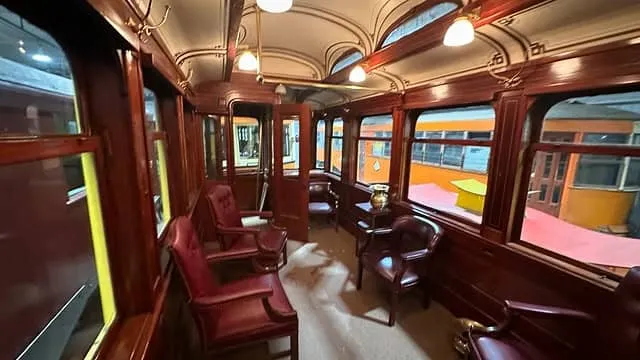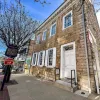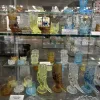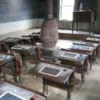
As automobiles and buses replaced streetcars more than half a century ago, a small group of people with a dream came together to form an organization dedicated to collecting, preserving, exhibiting, and interpreting the trolley era. The Pennsylvania Trolley Museum has evolved over the past 50 years from a handful of volunteers and three trolleys to over 600 members and nearly 50 trolleys preserved at its Museum near Washington, Pennsylvania.
PTM is unique in that visitors experience the trolley era first hand by riding into the past on one of the Museum's beautifully restored streetcars. During the early 1940s, the Museum's founders realized that older streetcars were in danger of disappearing without a trace and attempted to preserve an early trailer car in Pittsburgh's Sheridan neighborhood.
After World War II, the group re-formed as the Pittsburgh Electric Railway Club, and interest in a preservation effort grew as changes in the American lifestyle forced many streetcar lines into oblivion. In 1949, the organization acquired a small four-wheeled trolley that was about to be scrapped.
Pittsburgh Railways Company provided free storage for that car and two others that were subsequently acquired until a site could be found. Shown here is the Museum's first trolley, Pittsburgh Railways Company Paymaster's car M1. The car from which it was modified was built in 1890 by the Pullman Car Company in Chicago. It was the seed for the preservation effort that today forms the core of PTM. In 1953, the PERC was formally organized as a nonprofit corporation.
The Museum then added a gift shop and a museum area, as well as a restoration shop with additional indoor storage for the trolley collection. The Museum's Visitor Education Center was a second addition to the restoration shop building and opened to the public in November 1993. This facility allows the public to begin their visit in a pleasant, climate-controlled area that houses exhibits, restrooms, a theater/classroom, and a gift shop.
Until 1993, the Museum was an entirely volunteer operation. It was that year when the Museum hired a full-time Executive Director. In the years since, its growth, interpretive efforts, educational outreach programs, and visibility have become very professional while remaining largely volunteer. To more accurately reflect the scope of the Museum's collection and establish a fully descriptive public identity, both the Museum and the corporation were renamed Pennsylvania Trolley Museum.
In 1999, a professional Educator was hired to improve the educational outreach to the community. In 2004, the Museum took its next giant step with the completion of the Trolley Display Building, located on its 20-acre "East Site." This new building offers climate-controlled indoor storage for over thirty cars and serves as the destination for an extra-cost daily tour, which allows visitors to view the remainder of the vehicle collection.



